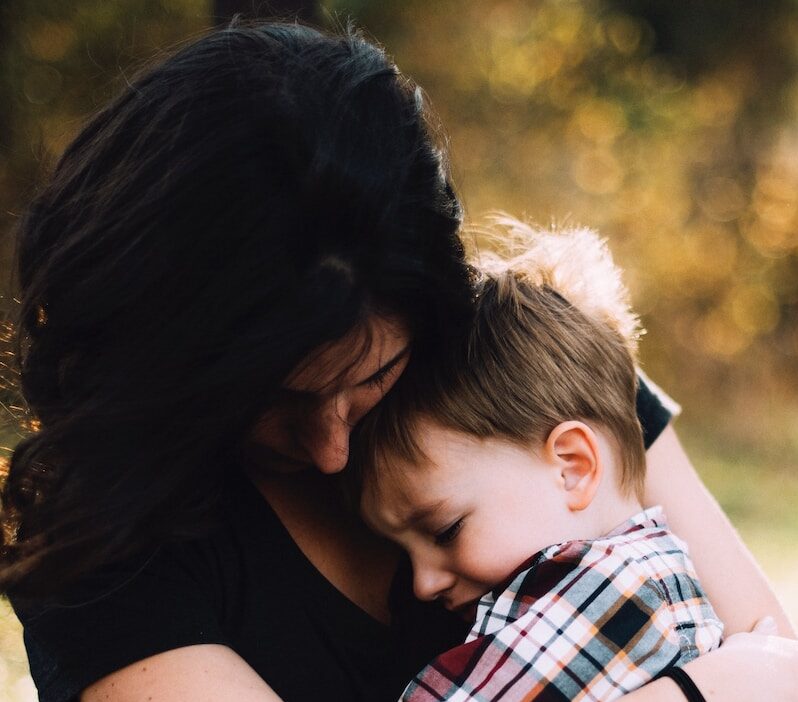Emotional Regulation: Equipping Kids With The Tools To Navigate Their Feelings
Do you remember a time when you were overwhelmed with emotions as a child? Perhaps it was when you didn’t get the toy you wanted, or when your parents scolded you for something. Those moments can be incredibly intense and confusing for kids, and without proper guidance, they may not know how to navigate their feelings.
Emotional regulation is key in helping children develop healthy coping mechanisms that will serve them throughout their lives. As a caregiver or parent, it’s important to help children understand their emotions and equip them with tools to regulate those feelings.
This article will explore the importance of emotional regulation in children, provide insights into understanding emotions, techniques for teaching emotional regulation, creating supportive environments for children, and practicing emotional regulation in everyday life. By implementing these techniques and supporting children’s emotional development early on, we can help create resilient individuals who are better equipped to deal with life’s challenges.
Table of Contents
The Importance of Emotional Regulation for Children
Helping children manage their inner storms is crucial for fostering healthy growth and development. Emotional regulation refers to the ability to identify, understand, and manage our emotions in a productive way.
Children who are equipped with these tools are better able to express themselves appropriately, cope with stress, build positive relationships, and perform better academically.
Why does emotional regulation matter so much for children? One reason is that young children are still learning how to navigate the world around them. They may feel overwhelmed by their emotions and have trouble communicating what they’re feeling.
If left unchecked, these emotions can lead to behavior problems or even mental health issues down the line. On the other hand, children who learn emotional regulation skills from an early age are more likely to develop empathy and self-awareness as they grow up.
These benefits can help them succeed not only in school but also in their personal lives.
Understanding emotions is essential for building strong emotional regulation skills.
Understanding Emotions
As you delve into the subtopic of Understanding Emotions, you’ll come to learn about the various types of emotions that we experience as human beings. By identifying and labeling these emotions, you can gain a better understanding of the way they affect your life and behavior.
Normalizing emotions plays a crucial role in accepting them as a natural part of being human, which ultimately leads to emotional intelligence and well-being.
Types of Emotions
You’ll learn about different types of feelings in this section. Emotions are complex and can be difficult to understand, especially for children who may not have the vocabulary to express how they feel.
Here are some common types of emotions that your child may experience:
– Primary emotions: These are basic feelings that everyone experiences, such as happiness, sadness, anger, fear, and disgust.
– Secondary emotions: These arise from primary emotions and involve a more complex blend of feelings. For example, feeling jealous or envious might stem from feeling angry or sad about something.
– Mixed emotions: Sometimes we experience more than one emotion at a time. For instance, you might feel both happy and sad when saying goodbye to someone you care about.
Understanding these different types of emotions can help your child recognize what they’re feeling and why they might be feeling that way. It’s important to teach them healthy coping strategies for managing their emotions so they can regulate them effectively.
As you move on to identifying and labeling emotions with your child, remember that it’s okay to feel all sorts of things! By learning about different types of feelings and how to cope with them in healthy ways, your child will gain valuable emotional regulation skills that will serve them well throughout their lives.
Identifying and Labeling Emotions
In this section, you’ll learn how to identify and label your emotions. This is an important step in understanding your inner self and knowing how to communicate your feelings effectively. Emotional expression is a vital part of being human, and it’s essential that we teach our children how to express themselves in healthy ways from a young age.
It’s important to remember that emotional regulation looks different at each stage of development. What may be considered normal emotional expression for a five-year-old will be different than what’s expected from a teenager. When teaching children about emotions, make sure the information is age-appropriate and presented in a way they can understand.
By helping them identify their feelings, you’re equipping them with tools they’ll use throughout their lives. As you go through this process together, keep in mind that everyone experiences emotions differently, so it’s crucial not to compare or judge others’ feelings based on our own experiences.
As we move into the next section on normalizing emotions, remember that identifying and labeling our feelings enables us to normalize them better. Understanding that all humans experience a wide range of emotions helps us feel more connected as individuals and communities.
It’s essential to create safe spaces where people can share their thoughts and feelings without fear of judgment or shame. Normalizing emotions starts with acknowledging them openly and honestly; this sets an example for those around us who might need help expressing themselves emotionally.
Normalizing Emotions
Normalizing emotions is a crucial aspect of creating a supportive and empathetic community that values the diverse experiences of its members. De-stigmatizing emotions allows children to understand that everyone has feelings, and it’s okay to experience a range of emotions.
When children feel safe to express their feelings, they’re better equipped to deal with them in healthy ways. By promoting emotional intelligence in childhood, we can help children develop skills for regulating their emotions and building resilience.
It’s important to teach children that it’s normal to feel sad or angry sometimes, but there are ways to manage those feelings without harming themselves or others. By normalizing emotions and providing tools for emotional regulation, we can empower children with the ability to navigate their feelings effectively.
Transitioning into the subsequent section about techniques for teaching emotional regulation, it’s vital to understand that these techniques should be tailored according to each child’s needs. One technique may work well for one child while not being effective for another. Therefore, it’s essential always to remain open-minded when exploring different strategies for teaching emotional regulation.

Techniques for Teaching Emotional Regulation
Teaching your little ones how to handle their emotions is like giving them a compass for the bumpy road ahead. As parents, it’s important to equip our children with the tools they need to regulate their emotions and navigate through life’s challenges.
One effective way to do this is through games and activities that promote emotional awareness and positive reinforcement. Games like ‘Emotion Charades’ or ‘Feelings Bingo’ help children identify different emotions and express themselves in a safe and fun environment. Positive reinforcement, such as offering praise or rewards for good behavior, can also encourage kids to continue regulating their emotions in a healthy way.
By incorporating these techniques into your parenting approach, you can help your child develop strong emotional regulation skills that will benefit them throughout their lives.
Creating a supportive environment is also crucial in helping your child learn how to regulate their emotions effectively. This includes modeling healthy emotional regulation yourself, providing a safe space for expression, and encouraging open communication about feelings.
By creating an atmosphere of understanding and support, you can empower your child to navigate their own emotions with confidence and resilience.
Creating a Supportive Environment
You can create a supportive environment for your students by practicing active listening, showing empathy, and encouraging open communication.
By actively listening to your students, you’ll validate their feelings and help them feel heard. Showing empathy allows you to understand where they’re coming from and respond in a way that’s compassionate and supportive.
Encouraging open communication helps build trust between you and your students. This is key in creating a safe space where they feel comfortable sharing their thoughts and feelings with you.
Active Listening
By actively listening to others, you can better understand and connect with their experiences. When someone’s sharing their feelings or thoughts with you, it’s important to give them your full attention and not interrupt or dismiss what they’re saying.
Active listening involves using communication skills such as asking open-ended questions, summarizing what the person has said, and reflecting on their emotions. Through active listening, you can gain a deeper understanding of how someone is feeling and why they may be feeling that way.
This allows for empathy to develop – the ability to understand and share in someone else’s emotions. Empathy’s an essential tool in emotional regulation because it helps us connect with others on a deeper level and respond appropriately to their needs.
So next time someone comes to you expressing their feelings, remember the power of active listening in fostering empathy towards them.
Empathy
As you immerse yourself in the importance of empathy, you’ll unlock a newfound ability to connect with others on a deeper level and gain an understanding of their experiences. Developing empathy skills is crucial in cultivating emotional intelligence in kids.
Empathy allows children to recognize and relate to the feelings of others, putting them in a better position to offer support and kindness. Empathy is not always easy, but it’s essential for healthy relationships and positive interactions.
Encouraging your child to practice empathy can begin with modeling it yourself. Show them that you care about their emotions by actively listening and validating their feelings. Point out ways they can be empathetic towards others, such as asking how someone else feels or sharing an experience where they felt similar emotions.
By doing so, you’re helping your child develop healthy emotional regulation skills that will benefit them throughout their lives. Now let’s move on to encouraging open communication without fear of judgment or criticism.
Encouraging Open Communication
Creating a safe and supportive environment for communication can strengthen relationships and foster deeper connections. As a parent, it’s important to encourage open communication with your child to help them navigate their emotions effectively.
When children feel comfortable talking about their feelings, they’re more likely to reach out for support when they need it. Parental involvement plays a key role in building trust with your child. This means taking the time to actively listen without judgment, showing empathy and understanding, and validating their experiences.
By doing so, you’re creating an environment where your child feels heard and understood. This not only builds trust but also encourages them to communicate openly about their thoughts and feelings. When children feel supported in this way, they’re better equipped to practice emotional regulation in everyday life.
Practicing Emotional Regulation in Everyday Life
In order to help your child practice emotional regulation in their everyday life, there are a few key strategies you can use.
Role-playing and pretend play can be a great way for kids to explore different scenarios and practice responding in a calm and controlled manner.
Journaling is another powerful tool that allows children to process their emotions in a healthy way.
Finally, it’s important to encourage healthy coping mechanisms, such as exercise or spending time outdoors, so that your child has a variety of options for managing difficult feelings.
Role-playing and Pretend Play
Role-playing and pretend play can be a fun and effective way for children to develop social skills. Studies show that kids who engage in imaginative play score higher on measures of creativity. Role-playing scenarios help children learn how to navigate social situations, including managing their emotions.
It also allows them to practice coping strategies when faced with challenging circumstances. Through role-playing, kids can act out different characters and explore various emotions in a safe and controlled environment. They can experiment with different ways of expressing themselves, which helps them gain confidence in their ability to communicate effectively.
This type of play also teaches empathy as children learn how others might feel in certain situations. Imaginative play provides an opportunity for kids to exercise their imaginations while developing emotional regulation skills, making it a valuable tool for parents and educators alike.
As you continue exploring creative ways to help your child learn about emotional regulation, consider incorporating journaling into your routine.
Journaling
You can use journaling as a way to connect with your child and help them explore their inner thoughts and desires, deepening your bond and fostering their creativity. Journaling has numerous benefits for children of all ages, including improved emotional regulation skills, increased self-awareness, and stress reduction.
Here are some tips for effective journaling:
– Create a safe space: Encourage your child to choose a private location where they feel comfortable expressing themselves without fear of judgment or interruption.
– Provide prompts: Offer specific questions or topics to prompt reflection such as “What made you happy today?” or “What challenges did you face?”
– Celebrate progress: Acknowledge your child’s growth in their writing by highlighting positive changes in their behavior or emotions.
By incorporating journaling into your daily routine with your child, you can help them develop healthy emotional coping mechanisms that will serve them well throughout their lives. Encouraging healthy coping mechanisms can be as simple as setting aside time each day for relaxation, engaging in physical activity together, or modeling positive self-talk.
Encouraging Healthy Coping Mechanisms
When it comes to helping your child navigate their emotions, it’s important to equip them with healthy coping mechanisms. Teaching mindfulness and positive self-talk are two effective ways to do so.
Practicing mindfulness can help children be more aware of their thoughts and feelings, allowing them to recognize when they need to take a step back and regulate their emotions. Encourage your child to take deep breaths, focus on the present moment, and engage in activities that bring them joy.
Another great way to encourage healthy coping mechanisms is by promoting positive self-talk. Teach your child phrases like “I can handle this” or “I’m strong,” which can help build resilience and boost confidence. Encourage your child to practice these phrases regularly, especially during times of stress or anxiety.
By teaching your child these simple yet powerful techniques, you’re providing them with tools they can use for years to come as they navigate life’s challenges.
Frequently Asked Questions
What are the long-term effects of poor emotional regulation in children?
Did you know that poor emotional regulation in children can have long-term effects on their adulthood?
In fact, a study found that individuals who struggled with emotional regulation as children were more likely to experience anxiety and depression in adulthood.
This is why it’s important to address emotional regulation early on and provide therapy options for those who need it.
By equipping kids with the tools to navigate their feelings, we can help them develop healthy coping mechanisms and prevent future mental health issues.
Remember, investing in a child’s emotional well-being now can have a positive impact on their future.
How can parents identify if their child is struggling with emotional regulation?
If you’re a parent, it’s important to keep an eye out for signs that your child may be struggling with emotional regulation.
This can manifest in a variety of ways, such as sudden outbursts or difficulty calming down after being upset.
One key way to help identify triggers is to pay attention to what seems to set your child off and try to address those situations proactively.
Additionally, if you notice persistent struggles with emotional regulation, seeking professional help from a therapist or counselor can be incredibly beneficial for both your child and your family as a whole.
Remember, every child is different and there’s no one-size-fits-all approach when it comes to emotional regulation – but by staying attentive and proactive, you can help give your child the tools they need to navigate their feelings in healthy ways.
Are there any cultural or societal factors that can impact a child’s ability to regulate their emotions?
Cultural influences and societal norms can greatly impact a child’s ability to regulate their emotions.
Studies have shown that children from collectivist cultures, where the emphasis is on group harmony rather than individual expression, may struggle with emotional regulation in situations where individual needs conflict with those of the larger group.
Additionally, parental expectations and family dynamics play a crucial role in how children learn to manage their emotions. For instance, parents who prioritize academic achievement over emotional well-being may inadvertently teach their children to suppress or ignore their feelings.
It’s important for caregivers to understand these cultural and familial factors so they can provide the necessary support and guidance for healthy emotional development.
Can emotional regulation be taught effectively in a classroom setting?
Classroom strategies can effectively teach emotional regulation with age-appropriate techniques. It’s important to create a safe and comfortable environment where children can express their emotions without judgment or ridicule.
Teachers can implement mindfulness practices, such as breathing exercises and guided meditations, to help students become more aware of their thoughts and feelings. Role-playing and social skills training can also teach children how to handle difficult situations positively.
By incorporating emotional regulation into the curriculum, teachers can equip students with valuable tools that will benefit them throughout their lives.
How can parents and caregivers address their own emotional regulation in order to model healthy behavior for children?
As a parent or caregiver, it’s important to remember that your own emotional regulation directly impacts the children around you. By taking care of yourself first, you can model healthy behavior for those in your care.
Self care strategies such as exercise, meditation, and spending time with loved ones can help you manage stress and regulate emotions. Mindfulness techniques like deep breathing and journaling can also be helpful in identifying and processing your feelings.
Remember the adage: “You can’t pour from an empty cup.” Prioritizing your own emotional well-being will not only benefit you but also create a positive environment for those you love.
So take some time each day to check in with yourself and practice self-care – it’s worth it!
Conclusion
Congratulations! You’ve taken the first step towards equipping your child with the tools to navigate their emotions.
Emotional regulation is an essential skill that helps children learn to manage their feelings, communicate effectively, and make better decisions.
By understanding the importance of emotional regulation and utilizing techniques like deep breathing exercises, mindfulness, and positive self-talk, you can help your child develop a healthy relationship with their emotions.
Creating a supportive environment where they feel safe to express themselves and practicing emotional regulation in everyday life will further enhance this skill.
Remember, emotional regulation is not just a one-time lesson but a lifelong journey. With patience, persistence, and plenty of love and support from you as their caregiver, your child can become more self-aware and empowered to manage their emotions successfully.
So go ahead and start today – together, you can conquer any emotional challenge that comes your way!







